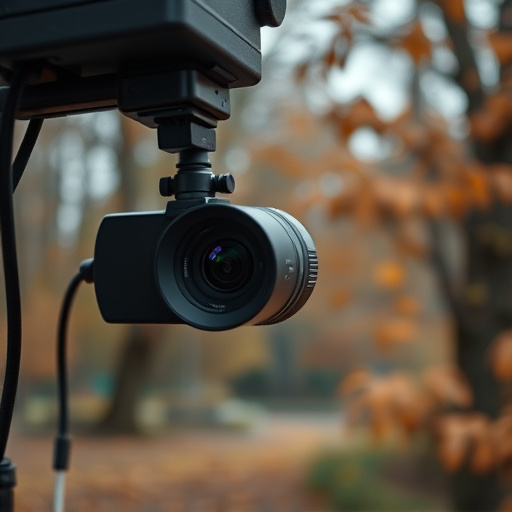Hidden cameras in rental properties, disguised as everyday items like smoke detectors, offer remote monitoring via streaming capabilities, but raise privacy concerns. Landlords must balance security with tenant rights by obtaining consent and limiting camera placement to common areas. Tenants can protect their privacy by conducting regular inspections, changing light bulbs, using robust security measures, and reporting suspicious activities. Open communication between landlords and tenants fosters a proactive safety net against covert surveillance.
Uncovering hidden surveillance in rental properties is a growing concern for tenants. With advanced technology making concealed cameras nearly indistinguishable, it’s crucial to understand the scope of this issue. This article delves into the world of secret surveillance spots, exploring how these devices operate, common placement areas, and the legal rights of tenants. Learn about prevention methods and detection techniques to ensure your privacy in today’s digital era, where hidden camera streaming capabilities can leave no trace until it’s too late.
- Understanding Hidden Camera Technologies
- Common Discreet Placement Spots in Rentals
- Legal Implications and Tenant Rights
- Preventing and Detecting Secret Surveillance in Your Property
Understanding Hidden Camera Technologies
Hidden camera technologies have evolved significantly, with concealed cameras now boasting advanced streaming capabilities. These tiny devices can be disguised as everyday objects like smoke detectors, power outlets, or even plants, making them nearly impossible to detect. Modern hidden cameras are equipped with high-definition video recording and live streaming features, allowing users to monitor activities remotely via their smartphones or computers.
The streaming capabilities of concealed cameras enable discreet surveillance from a distance. This technology has raised privacy concerns, especially in rental properties where tenants might not be aware that they’re being watched. It’s crucial for both landlords and tenants to understand the legal implications and ethical considerations surrounding the use of hidden cameras to ensure a safe and respectful living environment.
Common Discreet Placement Spots in Rentals
In rental properties, hidden cameras often find their way into unexpected places due to the desire to monitor for damage or ensure tenant safety. Common discreet placement spots include areas like smoke detectors, ceiling fans, and air conditioning units—items that blend in with the environment yet offer optimal viewing angles. These locations can capture detailed footage without raising suspicion, thanks to advanced technology that enables concealed camera streaming capabilities.
Additionally, electrical outlets and light switches can serve as perfect hiding spots for surveillance equipment. With modern devices capable of transmitting video feeds wirelessly or through hidden data lines, these seemingly innocuous fixtures can reveal intimate details of a space, making them popular choices for covert surveillance.
Legal Implications and Tenant Rights
The installation of concealed cameras in rental properties raises significant legal questions and concerns regarding tenant privacy. While landlords have a legitimate interest in security, they must adhere to strict regulations to protect tenants’ rights. The use of hidden cameras, especially those with streaming capabilities, is subject to various laws and guidelines that vary by jurisdiction.
Tenants are protected under civil liberties and human rights acts, which often forbid unreasonable searches and surveillance. Unconsented recording or streaming of individuals in private spaces, such as rental homes, can be considered a violation of privacy laws. It’s crucial for landlords to obtain proper consent, inform tenants about surveillance systems, and ensure that any cameras are placed in common areas only, respecting the boundaries of individual privacy.
Preventing and Detecting Secret Surveillance in Your Property
Preventing and Detecting Secret Surveillance in Your Property
Regularly inspect your rental property for any hidden devices is paramount to maintaining a secure living environment. Look beyond the obvious places; concealed cameras with streaming capabilities can be tiny and discreetly placed in seemingly innocuous objects like smoke detectors, light switches, or even electrical outlets. A keen eye for detail and familiarity with modern technology can help you identify these devices. Periodically changing light bulbs and checking for any unusual wiring can also raise red flags.
Implementing security measures such as using secure wireless networks with strong encryption, installing motion-activated cameras outside, and keeping an up-to-date antivirus software on all devices connected to your network are effective ways to deter potential secret surveillance. Additionally, educating tenants about the importance of privacy and empowering them to report any suspicious activity can create a proactive safety net. Regularly communicating open lines between landlords and tenants fosters trust and ensures that everyone is vigilant against potential intrusions into personal space.
In today’s digital age, understanding the potential for hidden surveillance in rental properties is essential. From sophisticated concealed cameras with streaming capabilities to less obvious yet strategic placement spots, tenants must be vigilant. While landlords have legal rights, it’s crucial to respect tenant privacy. By staying informed about these issues and taking proactive measures, residents can protect their personal spaces and ensure a safe living environment. Regular inspections and knowledge of one’s rights are key to navigating this complex landscape.
